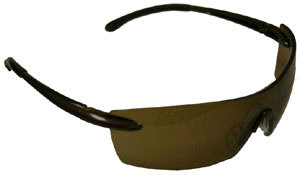It seems that things haven’t improved in the past few years regarding employees getting injured because they were not wearing their personal protective equipment on the job. Surveys of safety professionals, conducted by Kimberly-Clark Professional at the National Safety Council Congress in 2006, 2007, and 2008, found high levels of non compliance with PPE protocols. In 2006, there was 85% non-compliance; 87% in 2007, and 89% in 2008.
The headline in the latest Kimberly Clark survey of 132 attendees at the American Society of Safety Engineers show in Baltimore, Maryland, conducted via the Internet between June 9, and 13, 2010, reads: U.S. Workers Risking Injury By Not Wearing Safety Equipment. Almost all safety professionals in this survey reported that workers in their companies had at some point failed to wear the necessary safety equipment while on the job. According to this survey, the top workplace safety issue by all respondents was worker compliance with PPE protocols.
The most challenging PPE category, (eye protection and safety glasses), according to 42 per cent of respondents, was that nearly three out of five workers who experienced eye injuries were found not to be wearing eye protection at the time of the accident or were wearing the wrong kind of eye protection for the job. This information comes from the Bureau of Labor Statistics. NIOSH reports that around 2,000 U.S. workers each day have a job-related eye injury requiring medical treatment, and the U.S. Labor Department says that thousands are blinded each year from work-related eye injuries that could have been prevented. What is so hard about putting on a pair of safety glasses, goggles, or side shields?
Hearing protection was the next highest category for noncompliance. Occupational noise-induced hearing loss is 100 per cent preventable when proper preventative measures are implemented. Coming in next were gloves, followed by head protection. Some of the complaints from workers were: uncomfortable, too hot, unavailable near the task, poor fit, or unattractive looking.
We all know that every business must have a strong safety culture, beginning at the top. It is important for managers and upper level bosses to wear safety products that apply to their workers any time they are on the shop floors, or other areas where their employees can see them. They and the floor supervisors should set the example and be consistent with it.
Personal protective equipment is more effective if it fits well and is comfortable. Persons in charge of purchasing these products should keep in mind the different sizes and shapes of their employees. Good training is necessary, as well. Whether you have young workers who think they are never going to get hurt, or more experienced ones that have had the good fortune to not be in an accident, stating “it’s never going to happen to me,” may sadly be fooled one day.
Supervisors who have seen employees get hurt on the job, say it is helpful if an employee can tell his/her co-workers how it happened and how it has changed his/her life, if the injury was serious. Wearing PPE should be a condition of employment. If a worker is not complying with that rule, they should be reprimanded just the same as any other violation of their work agreement. They need to understand that they can lose their job by failing to wear equipment that could possibly save their limbs or even their life. Contractors should comply the same as regular employees and ensure their employees follow the same safety protocols. If a job gets shut down because of non-compliance, and there is no pay for time that they are shut down, it may get everyone’s attention pretty fast.
If your excuse was “I didn’t have time to put it on,” was it because you were late getting to work? “I won’t get in an accident” or “I’ve been doing it that way for years, and so far, so good!” are just reasons that really don’t fly. You have to be responsible for your safety, and your employer buys you that equipment to keep you safe. It is important that you keep up with it, take care of it, and wear it at all times on the job.
There’s been much discussion about safety incentives. Some companies give safety awards when their employees go for a year without a lost-time accident. At one place I worked, we got pizza for going a month without a lost-time accident; however, there were people that got hurt, but wouldn’t report it because they didn’t want the others to lose their pizza party! One good suggestion was from a manager that gave “on-the-spot” rewards. If he observed an employee using safe work practices, he would hand him/her small treats such as movie tickets, dinner gift cards, fuel gift cards, some nice safety glasses, gloves, or glove clips.
Whether you get a reward for safe actions at work or not, the main prize is staying safe throughout your entire career. Having a supervisor that watches and observes like a “mother hen” really is the key. Supervisors know a lot more than we think they do, sometimes. They are responsible for your safety and seeing that you do everything you can to work safely. One of the most important things you can do is to wear your PPE, whenever it is required.
If it doesn’t fit or there’s another problem, tell your supervisor or manager. Otherwise, no excuse is good enough when you take a chance with safety.
